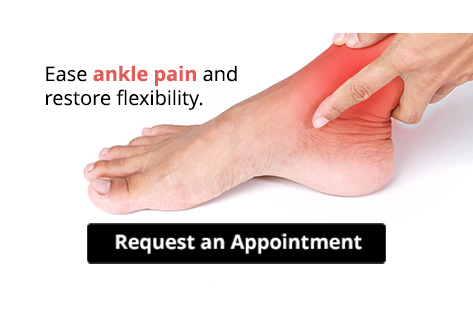Blog
Items filtered by date: May 2025
Finding Relief From Shoulder Pain With Chiropractic Care

Shoulder pain can greatly affect daily activities, making even simple tasks difficult. Chiropractic care offers a natural and effective solution by addressing the underlying causes of pain rather than just the symptoms. Chiropractors assess the entire musculoskeletal system to determine if misalignment or tension in the spine, neck, or upper back may be contributing to shoulder discomfort. Through gentle adjustments and targeted therapies, they help restore proper alignment, improve joint mobility, and reduce inflammation. Chiropractic care also supports muscle balance and encourages better posture, which can prevent recurring shoulder issues. Patients often experience reduced pain, increased range of motion, and improved function without the need for medication or surgery. If you are experiencing shoulder pain, it is suggested that you speak to a chiropractor who can offer you effective relief solutions.
Shoulder and arm pain can significantly affect daily life, making simple tasks challenging. This pain often arises from issues such as rotator cuff injuries, tendonitis, nerve compression, or even misalignments in the spine or shoulders. Symptoms can range from a dull ache and stiffness to sharp, shooting pain that radiates down the arm, limiting mobility and impacting overall comfort.
Chiropractic care offers a non-invasive approach to managing shoulder and arm pain by focusing on the musculoskeletal system. Chiropractors assess the shoulder, neck, and spine alignment to identify potential sources of nerve compression or joint dysfunction. Gentle adjustments aim to restore proper alignment in the affected areas, which can relieve nerve pressure, reduce inflammation, and encourage natural healing.
In addition to adjustments, chiropractors may recommend exercises to strengthen the surrounding muscles and improve flexibility. Stretching routines can help relieve tension, while strengthening exercises provide better support to the shoulder and arm, preventing further strain.
By addressing the root causes of discomfort, chiropractic care provides a holistic approach to managing shoulder and arm pain. This method promotes long-term relief by restoring alignment, enhancing function, and encouraging a more active, pain-free lifestyle without relying on medication or surgery.
1. How does chiropractic care help with frozen shoulder?
Chiropractors use gentle mobilization and targeted adjustments to improve joint flexibility. Soft tissue therapies can also reduce inflammation and improve function.
2. Is shoulder pain always caused by a shoulder issue?
No, shoulder pain can originate from the neck or upper back due to nerve compression or referred pain. Chiropractors assess the entire musculoskeletal system to find the root cause.
3. Are chiropractic adjustments safe for shoulder pain caused by arthritis?
Yes, chiropractors use gentle, non-invasive techniques tailored to reduce arthritis-related pain and improve joint mobility.
If you have any questions please feel free to contact our office located in Bellmore, NY .
Relieving Pinched Nerves Through Chiropractic Care

Chiropractic care offers a natural and focused approach to relieving pinched nerves, which occur when surrounding tissues such as bones, muscles, or tendons place excessive pressure on a nerve. This pressure can lead to pain, tingling, numbness, or weakness in the affected area. Chiropractors use gentle spinal adjustments to restore proper alignment and reduce the tension causing the nerve compression. These adjustments can help relieve pressure, improve mobility, and support the body’s ability to heal. In addition to spinal care, chiropractors may use soft tissue therapy and recommend exercises that promote flexibility and strengthen supportive muscles. Chiropractic care can offer lasting relief and help restore comfortable, natural movement throughout the body. Pinched nerves can be painful, and may cause difficulty in completing daily activities. If this applies to you, it is suggested that you confer with a chiropractor who can discuss appropriate treatment methods with you.
Pinched Nerve
A pinched nerve occurs when surrounding tissues, such as bones, muscles, or tendons, apply excessive pressure on a nerve. This condition can cause pain, numbness, tingling, or weakness, often in the neck, back, or limbs. Everyday activities, poor posture, or repetitive motions are common triggers. Left untreated, the condition may worsen, leading to chronic discomfort and reduced mobility.
Chiropractors use a hands-on approach to relieve the pressure that causes a pinched nerve. By performing gentle spinal adjustments, they create space for the nerve to function properly, alleviating discomfort. Chiropractic care may also include stretching exercises to improve flexibility and targeted muscle work to reduce surrounding tension. Patients often receive guidance on posture and activity modifications to prevent recurrence. This tailored approach focuses on restoring normal nerve function and improving overall quality of life.
1. Are pinched nerves only caused by spinal issues?
No, they can also result from tight muscles, inflammation, or repetitive strain. Chiropractors address both spinal and muscular causes.
2. How does a chiropractor determine the location of a pinched nerve?
Chiropractors use physical exams, mobility tests, and sometimes imaging studies like X-rays to pinpoint the source of nerve compression.
For additional information, please contact our office located in Bellmore, NY .
How Chiropractic Care Can Help Relieve Low Back Pain

Chiropractic care offers a noninvasive and drug-free approach to managing low back pain. By focusing on the alignment of the spine and the function of the musculoskeletal system, chiropractors aim to reduce pressure on nerves, improve mobility, and relieve discomfort. Spinal adjustments help restore proper joint movement, which can ease pain caused by muscle tension or misalignment. Chiropractic care may also include stretching, targeted exercises, and posture education to support long-term relief and prevent future issues. Many individuals find this approach beneficial for both acute and chronic low back pain, especially when combined with lifestyle changes. If you have low back pain, it is suggested that you consult a chiropractor who can help you with effective relief solutions.
Low back pain is one of the most common causes of discomfort and reduced mobility, affecting people across all age groups. It often originates from issues such as muscle strain, joint dysfunction, or poor posture. Everyday activities like bending, lifting, or prolonged sitting can aggravate the pain, turning a temporary ache into a persistent problem. If left untreated, acute low back pain can become chronic, restricting movement and diminishing quality of life.
The spine’s alignment plays a critical role in back health, as misalignments can create tension, inflammation, and nerve irritation. Addressing these underlying issues is essential for relief and long-term recovery. Chiropractic care offers a non-invasive solution by focusing on spinal health through targeted adjustments and personalized recommendations. If low back pain is interfering with your daily life, seeing a chiropractor can help alleviate discomfort and restore function naturally.
1. How does chiropractic care help low back pain during pregnancy?
Chiropractors use gentle, pregnancy-safe adjustments to reduce stress on the spine and pelvis, helping alleviate low back pain caused by changes in posture and weight distribution.
2. Does chiropractic care work for chronic low back pain caused by old injuries?
Yes, chiropractors address lingering misalignments and stiffness caused by old injuries, helping restore function and reduce chronic pain.
For additional information, please contact our office located in Bellmore, NY .
Ease Your Ankle Pain

If your ankle feels sore, stiff, or unstable, it could be due to a strain, inflammation, or other joint issue. The ankle joint can be adjusted to improve the way it moves, and along with targeted exercises, help support your ankle. This treatment also allows you to avoid more ankle problems down the road.
Relieve ankle pain and stiffness. Call today for an appointment.
Ulnar Nerve Compression

Ulnar nerve compression, also known as cubital tunnel syndrome, occurs when the ulnar nerve is pinched, often at the elbow. This nerve runs from the neck to the hand, controlling sensations in the ring and pinky fingers and aiding hand movement. Compression can cause numbness, tingling, or weakness in the affected hand and arm, sometimes worsening with bending the elbow or prolonged pressure, like resting on the elbows or repetitive activities. Athletes, individuals with desk jobs, or those performing repetitive arm movements are most at risk. Chronic compression can lead to muscle wasting and reduced hand function. Chiropractors address ulnar nerve compression by identifying misalignments in the neck, shoulder, or elbow that may be contributing to nerve irritation. Through adjustments, soft tissue work, and ergonomic advice, they help relieve pressure, restore mobility, and promote long-term nerve health. If you have this type of pain, it is suggested that you schedule an appointment with a chiropractor for non-invasive treatment.
Tennis and Golfer's Elbow
Tennis and golfer's elbow, or medial epicondylitis, is a condition caused by inflammation or irritation of the tendons on the inner side of the elbow. Despite its name, this condition is not limited to golfers and tennis players. It can affect anyone engaging in repetitive wrist or forearm motions, such as throwing, lifting, or typing. Symptoms include pain, tenderness, and stiffness on the inner elbow, sometimes extending into the forearm. Weak grip strength and difficulty with everyday tasks are common complaints.
Chiropractic care can play a role in managing golfer's elbow by addressing muscle tension and improving joint function. Gentle adjustments may reduce strain on the affected area, while soft tissue therapies and stretching techniques can help alleviate discomfort and promote healing. Chiropractors may also provide advice on modifying activities to reduce stress on the tendons, offering a holistic approach to recovery and prevention.
1. Can tennis or golfer’s elbow occur without playing sports?
Yes, these conditions are often caused by repetitive motions like typing, lifting, or using tools. Chiropractors can assess and treat the root causes of these repetitive strain injuries.
2. Should I avoid chiropractic care during the acute phase of tennis or golfer's elbow?
Gentle adjustments and soft tissue techniques can still be beneficial, reducing inflammation and improving mobility without aggravating the injury.
For additional information, please contact our office located in Bellmore, NY .
